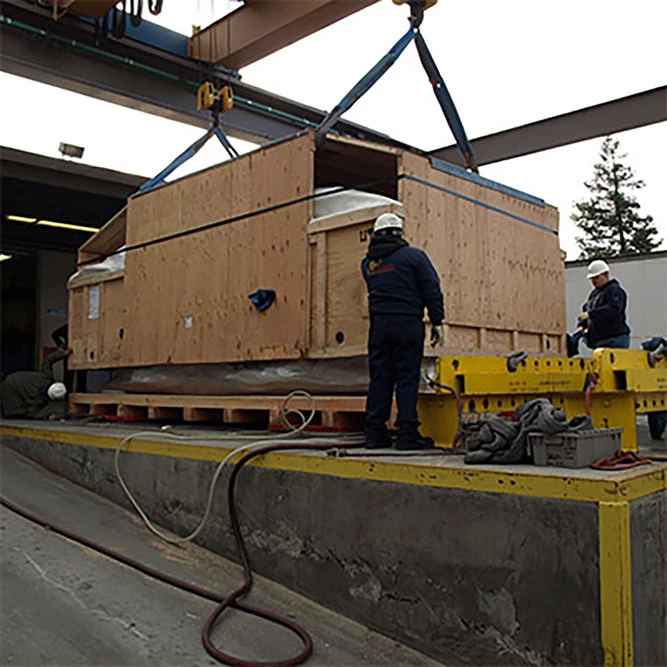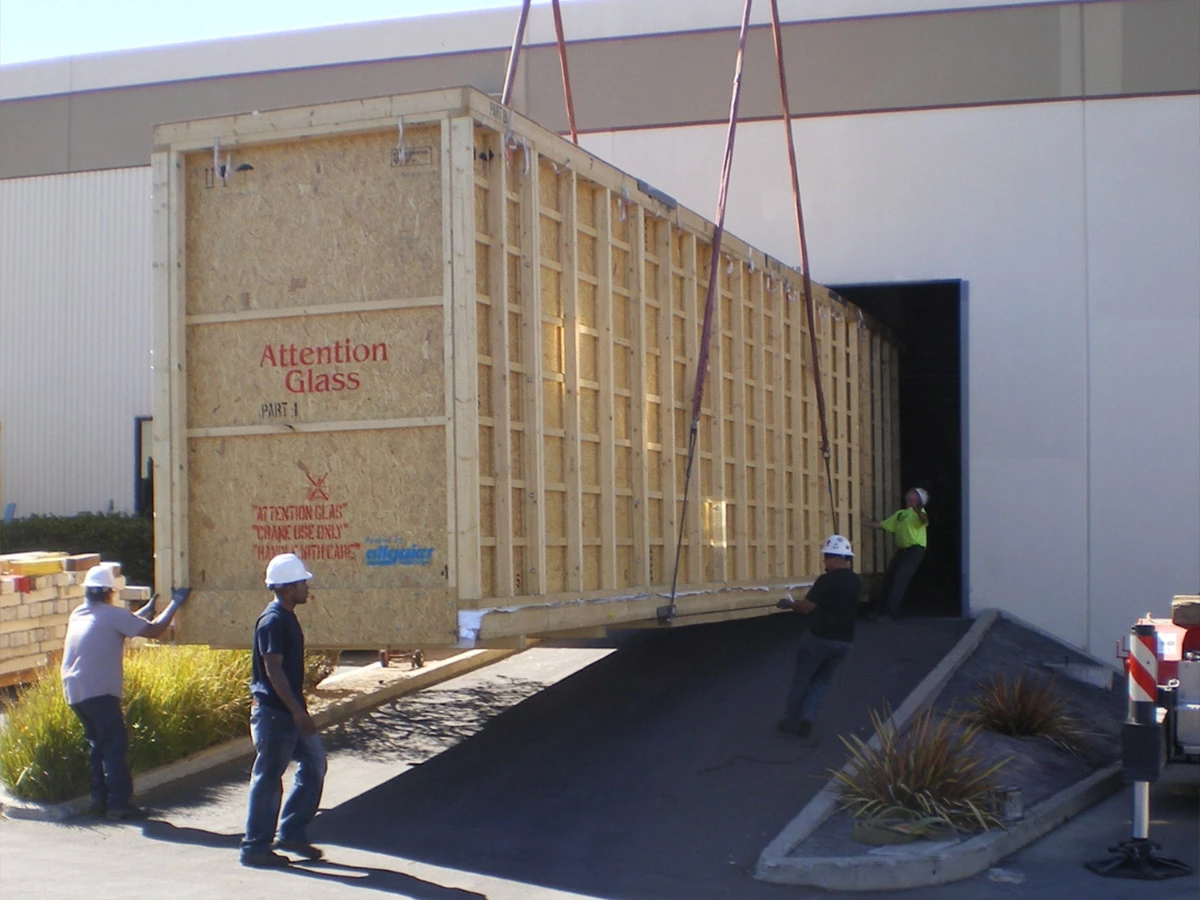Eight high-capacity air casters, two 15k forklifts, various hydraulic jacks, and 8,000 lb skates are on site. Floor coverings are down, and all necessary door frames have been removed. A four-man team plus a supervisor is set. The de-installation and move plan has been reviewed & approved by the project manager and the customer. The PPE is on, it’s a little cold inside, and everyone is excited. We are ready to start rigging. But what is rigging?
The words “rigging” and “rigger” can be a little ambiguous, as they are used in a variety of fields and industries, from oil production and film to animation, sailing, and more. Generally speaking, in the world of logistics and manufacturing support, rigging is both a noun and a verb. The noun refers to the equipment, and the verb refers to lifting, hoisting, and setting up capital assets. Machinery moving is another way to describe rigging and is a little easier to comprehend. However, not everything that requires rigging is machinery, at least not in the general sense of what we think of when we use that term, so we prefer to use the term capital assets.
There are two main types of movers. You have residential movers and office and industrial (O&I) movers. The latter are usually referred to as commercial movers. Riggers are a type of commercial mover, but there is more than one kind. Confused? Don’t worry. You’re not alone.
Most commercial moving companies do not have rigging teams. Commercial movers focus on offices and almost always do so using a common enclosed trailer—desks, computers, boxes, inexpensive framed pictures, the breakroom fridge, that kind of thing. Commercial movers are a vital part of the relocation process, but they are not riggers. A commercial mover may often hire a rigging company to do a special part of the job. They ask the riggers to move the expensive, sensitive, and really heavy capital assets that commonly require a flatbed for transportation.

This is not to put down commercial movers. It’s only to differentiate them from the rigging teams that do a different job. A rigging company is designed to move certain projects such as a $2 million semiconductor tool, an oversized asset such as an aircraft, or a very heavy item like an 80,000 lb, 16-foot-high boiler. These items would either not fit on a 53’ trailer or cannot be moved with just a standard forklift. In the case of the semiconductor tool, they would want that item crated and sealed with a moisture barrier and moved separately while often also wanting installation and de-installation support to anchor it to the ground. Aerospace, energy equipment makers, and manufacturing companies frequently use rigging teams.
Laboratories are another environment that requires rigging teams, but not all riggers do this specialty work. Clean room environments often require dust, static, and moisture mitigation techniques. Often, scientific testing equipment can be small but very sensitive, and only skilled, qualified teams should be relocating them, at times in appropriate clothing. Crating is the final component. A good percentage of the capital assets mentioned here should be sealed with a moisture and dust barrier bag, then anchored to a custom-built skid and crated with heat-treated, stamped wood for maximum protection, with the center of gravity clearly marked so that everyone handling can do so safely.
Thanks for reading this article. We hope you learned something about rigging today and that it helps you with your future projects.
From moving the first Mars Rover back in the 1980s to moving the 3D Printers and cutting-edge, green energy technology of today, Three Way Logistics has experience and training for rigging and machinery moving projects across the country.

